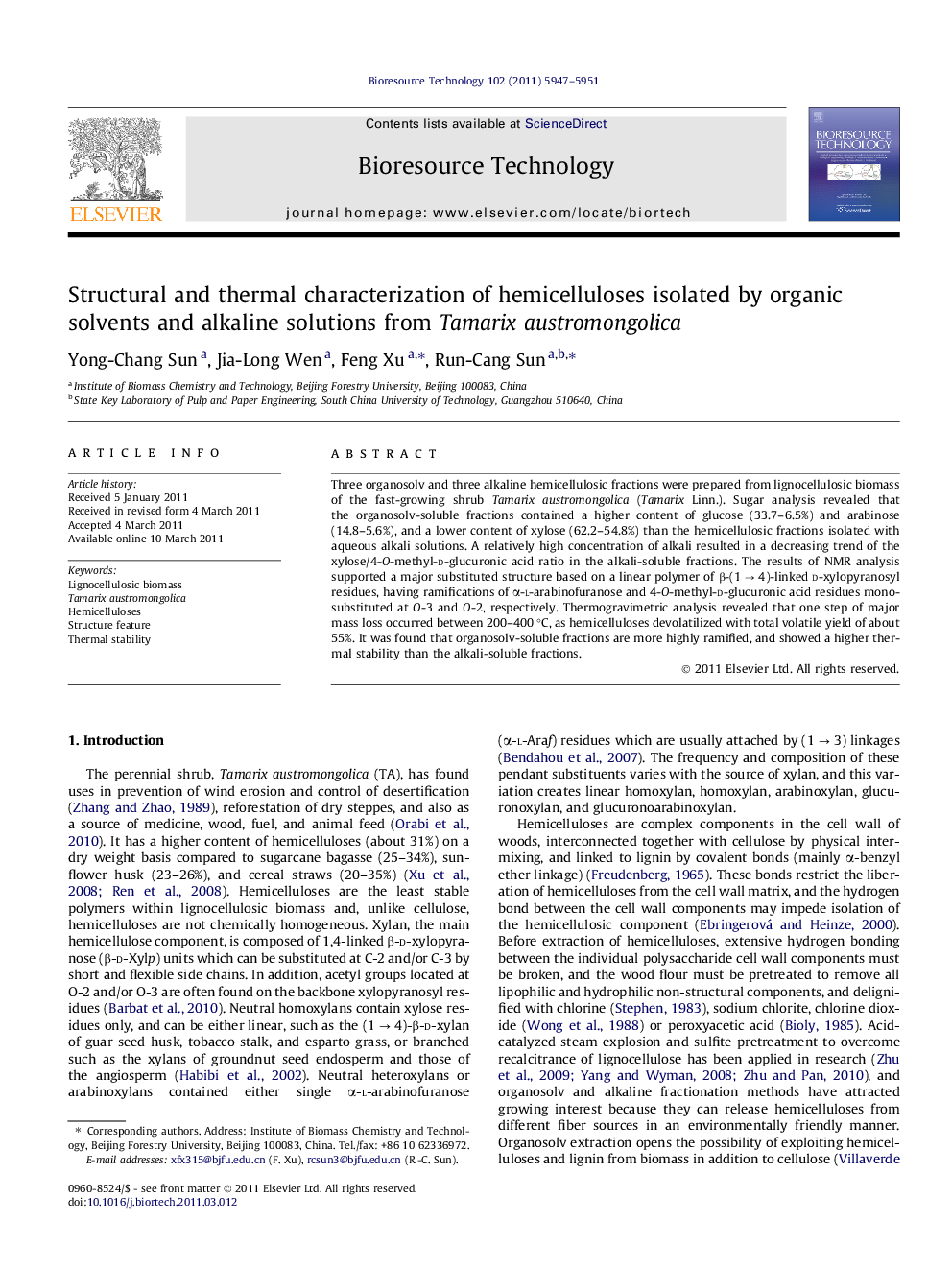| Article ID | Journal | Published Year | Pages | File Type |
|---|---|---|---|---|
| 681989 | Bioresource Technology | 2011 | 5 Pages |
Three organosolv and three alkaline hemicellulosic fractions were prepared from lignocellulosic biomass of the fast-growing shrub Tamarix austromongolica (Tamarix Linn.). Sugar analysis revealed that the organosolv-soluble fractions contained a higher content of glucose (33.7–6.5%) and arabinose (14.8–5.6%), and a lower content of xylose (62.2–54.8%) than the hemicellulosic fractions isolated with aqueous alkali solutions. A relatively high concentration of alkali resulted in a decreasing trend of the xylose/4-O-methyl-d-glucuronic acid ratio in the alkali-soluble fractions. The results of NMR analysis supported a major substituted structure based on a linear polymer of β-(1 → 4)-linked d-xylopyranosyl residues, having ramifications of α-l-arabinofuranose and 4-O-methyl-d-glucuronic acid residues monosubstituted at O-3 and O-2, respectively. Thermogravimetric analysis revealed that one step of major mass loss occurred between 200–400 °C, as hemicelluloses devolatilized with total volatile yield of about 55%. It was found that organosolv-soluble fractions are more highly ramified, and showed a higher thermal stability than the alkali-soluble fractions.
